Cold Composting—Kitchen Food Scraps Working FAST!
It’s garden season and for a wide range of reasons, more and more of us are turning to growing our own vegetables. With this in mind I thought I’d share a fast and frugal idea that I’ve been doing for years: cold composting.
We all know about composting—piles of plant food scraps that given enough time, do amazing things for soil conditions. But the key word here is TIME. Frankly, I don’t have much anymore—maybe you can relate. So if you’re interested in reaping the benefits of homemade compost in a super short time, read on.
The reason traditional composting takes TIME is because heat needs to build-up in the pile, which helps break down the contents of the pile. But cold composting doesn’t need heat and it’s the fastest way to get plant food scraps back into the ground, and in a form that plants (and worms) can use.
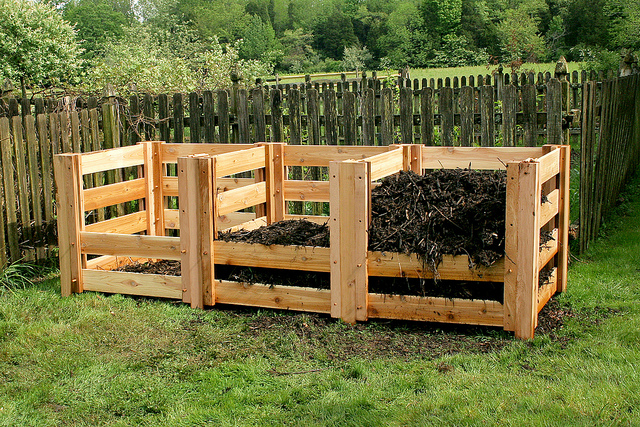
In a blender you pulverize your veggie scraps. I found a great blog, My Sister’s Pantry (www.mysisterspantry.wordpress.com) that discusses this process using pictures to explain it all. The author uses a Vita Mix for her cold composting, and I did too (until I gave mine away to my daughter). Now I use a BlendTec. But this method will work even if you don’t have a high-powered blender—just cut up your scraps into very small pieces.
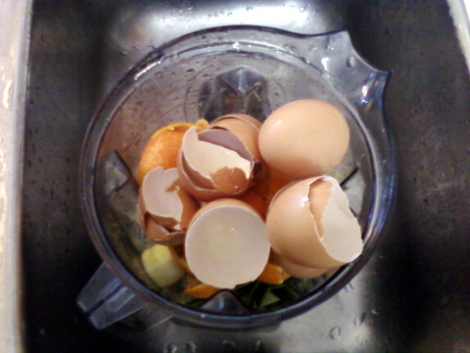
When you are working with any plant food (as well as egg shells) as part of your meal prep, add all scraps to your blender (set it in your sink so it’s out of the way).
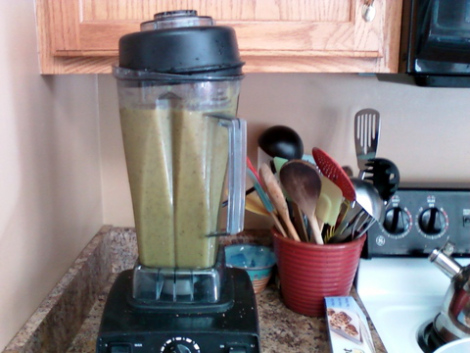
When it’s almost full, add some water and blend until the contents are smooth and small—similar to a green smoothie.
I would also add a few tablespoons of cottonseed meal to this mixture, which helps the liquid compost break down in the soil even quicker. Then I would dig a small trench around trees, shrubs, and flowers and pour the compost in. I’d cover this trench over with soil, and that was it. The nutrients from the plant scraps would then go to work nourishing the roots of my landscaping.
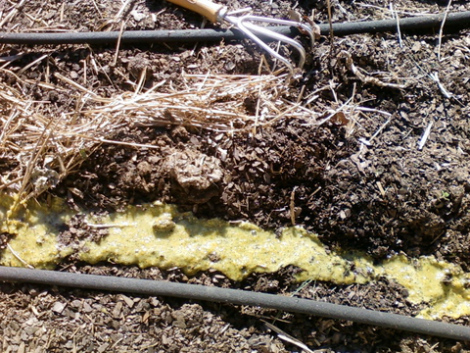
The author of My Sister’s Pantry explains what she does with garden rows: “Work between your rows and scrape a top layer of soil or mulch away making a long shallow trench. I usually use 1-2 blenderfuls for an 8 foot length in my raised beds. I do this in 4-5 different places in the same bed. I pour the ‘garbage smoothie’ into the trench.
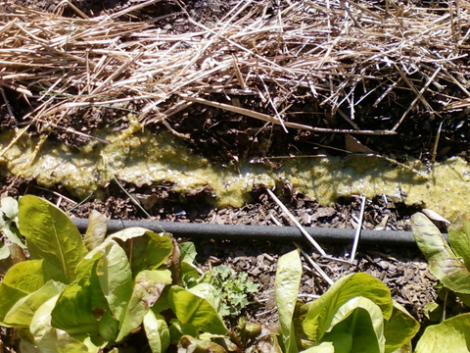
“It’s fine to pour close to plants, just don’t slop a bunch on them or dig up their roots. Cover the furrow and let nature take her course.”
My Sister’s Pantry author also suggests being sure to include eggshells in every batch if you tend to get blossom end rot on tomatoes. She also adds coffee grounds to this cold compost.
One of the biggest surprises you’ll have is how quickly the compost disappears. Although you’ll be able to see tiny bits of eggshell for a month or more, the rest of it blends right into the soil in a matter of weeks. Repeating this process every week or so builds rich, dark soil that fosters healthy plants that more easily withstand the onslaught of bugs, diseases, and late summer drought. And don’t you love the idea of how so little in our meal prep goes to waste with this idea?
- www.polkfyn.blogspot.com
- www.cedarstore.com
- www.mysisterspantry.wordpress.com
 Alice Osborne
Alice Osborne
Weekly Newsletter Contributor since 2006
Email the author! alice@dvo.com
